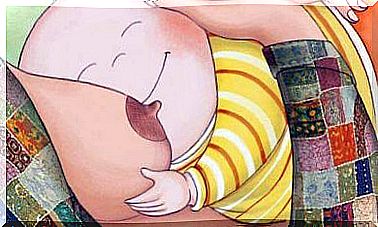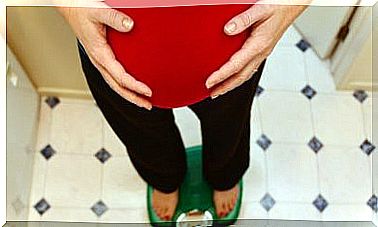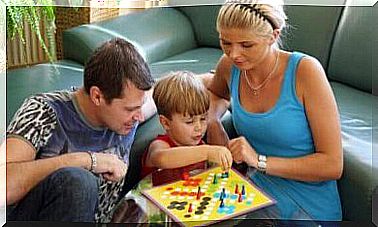Umbilical Cord: What Is It And What Is Its Function?
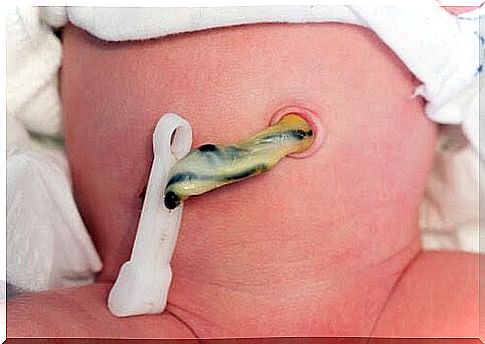
The baby’s umbilical cord plays a key role during pregnancy in the development of the fetus. It provides nutrients and oxygenates your baby’s blood.
It is so significant that many parents choose to save the blood from their children’s umbilical cord in order to be able to use stem cells when needed in the future.
The baby’s umbilical cord: Vital for fetal development
The length of the umbilical cord is about 50 cm. It has a spiral shape – like an old telephone cord – and normally has between 10 and 12 spirals.
It contains two arteries and a vein. These are all surrounded by a liquid called Wharton’s jelly.
This gel-like connective tissue protects the umbilical cord and prevents it from tangling.
The two arteries and the vein are arranged in a triangle; the arteries form the base, with the vein forming the tip of the triangle.
The umbilical cord is formed between the fourth and eighth week of pregnancy. After your baby is born, the doctor or midwife will cut it off and this will leave a permanent scar: the navel.
This, together with the expulsion of the placenta from the uterus, points to the temporary nature of these organs. They are both formed to perform a specific and temporary function. When they are done with it, the body gets rid of these organs.
During your baby’s stay in the womb, the umbilical cord represents your baby’s only source of nutrition, blood, and a high level of oxygen. It forms a connection between the placenta and the navel of the fetus.
Given the above-mentioned functions, it is indispensable for fetal development.
It is also a physical manifesto of the bond between mother and child in its maximum and most basic form. For that reason, and many more, mothers are a fundamental pillar of their children’s lives.
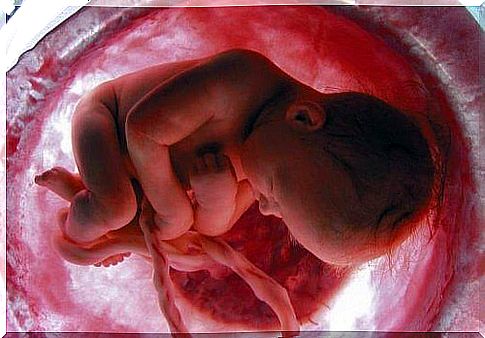
The function of the umbilical cord
Among the key functions of the umbilical cord for the development of the fetus, we would like to highlight the following:
- Nutrition: It brings nutrients that the placenta provides to the fetus.
- Oxygen: One of the tasks of the umbilical cord is to transport oxygen-rich blood to the fetus.
- Excretion: Exhaled carbon dioxide and nutrient waste are excreted through the umbilical cord.
- High stem cell content: Embryonic stem cells are undifferentiated cells, which means that they can be transformed into different types of cells. They can become skin cells, nerve tissue or be transformed into cells that form the heart, kidneys, etc. If they are stored, stem cells can be used to treat diseases such as childhood leukemia, spinal cord injuries or heart problems.
- Transmission of antibodies: Towards the end of pregnancy, the mother sends antibodies that are formed in her body to the fetus. These antibodies contribute to the formation of the baby’s immune system.
- Prevents other diseases: According to a report by Genome Biology , the analysis of umbilical cord cells from premature babies can help diagnose serious lung changes, such as bronchopulmonary dysplasia.
As you can see, an umbilical cord is not just a fundamental part of creating new life. It is also a way to save lives.
Donating umbilical cord blood is a non-painful process that can be performed immediately after birth.
How to best care for the umbilical cord
Many questions can arise when it comes to taking care of the umbilical cord after the birth of your baby. Let’s go through a couple here:
When is the right time to cut the umbilical cord? Traditionally, in healthcare, it has been cut off immediately after the child’s birth.
But the World Health Organization and other researchers suggest waiting between 30-120 seconds before cutting it off.
As a result, the risk of the child needing a blood transfusion decreases. The risk of intravenous bleeding is also reduced.
But if you plan to save umbilical cord blood, it must be cut off immediately.
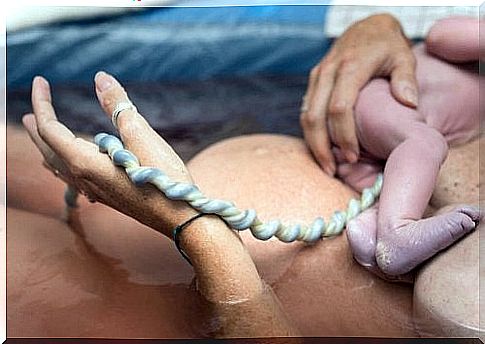
What do you need to do to take care of your newborn’s umbilical cord? The part of the umbilical cord that remains attached to your baby’s navel will dry out within a few days and fall off by itself.
This usually happens during the first or second day of life. In the meantime, you can clean the area with 70% alcohol and a sterile gauze bandage.
According to new studies, it is not absolutely necessary to use these chemicals on a newborn’s umbilical cord. It’s enough if you just keep the region dry.
However, in parts of the world where the risk of bacteria is high, this cleaning process can help prevent any infection.
Can I bathe my newborn? Yes, you can, but you must always gently wipe the umbilical cord and the area around it afterwards.
How can I be sure that everything is okay? If you find that the umbilical cord looks strange, is bleeding or leaking fluid, talk to your pediatrician. It is normal for the stump to change color and smell a little bad before it falls off.
A very small amount of blood is normal (drops, small spots), but if there are larger amounts, you should show it to your doctor. He or she may prescribe antibiotics to avoid infection.

